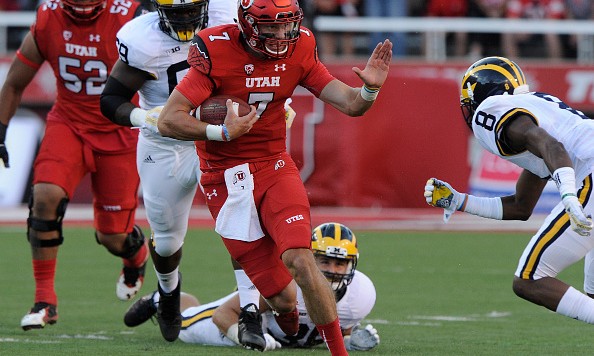Last weekend, with the night window exploding into all sorts of wonderful chaos — but, instructively, at the same time — we were treated to something incredibly intense and memorable.
However, as college football fans and chroniclers, we were also forced to choose one or two games over another.
The lingering problem with college football scheduling isn’t about to go away anytime soon, though in an ideal world, it would and should.
Washington State-Oregon. Oklahoma State-West Virginia. TCU-Kansas State. Michigan State-Rutgers. Miami-Florida State. All five games produced thrilling finishes. All five games carried significant consequences within a power conference race. Four of them started within a 70-minute span of time, and when Wazzu-Oregon — the first game of the five in chronological order — moved into double overtime, the traffic jam became particularly pronounced.
If you had three or four televisions or screens in your room, sure, you were able to cope. That’s a larger number of screens than most people have, and it shouldn’t be required to follow the sport on Saturdays.
Consider, in the background, the fact that the noon window featured very few close games, and the 3:30 window was not exactly crammed with sizzlers beyond Georgia-Tennessee and Wisconsin-Nebraska.
We’ll lay out a vision for a better college football schedule in a separate (overarching) piece, but keep the above in mind as you read the way the week seven schedule ought to be structured:
*
In the noon window this Saturday, Ole Miss-Memphis — a big game — coexists with Iowa-Northwestern, both on the ESPN/ABC family. Moving one of those games to 12:30 or 1 would create a stagger and a chance to savor both of those contests in greater depth. Yet, we’ve said from the outset this year that ESPN/ABC is so much more constrained than other networks, due to the volume of product it carries. It is at least more understandable when same-time games of consequence both (or all) originate under the ESPN/ABC umbrella.
It’s still unfortunate, however.
Note that only one game — Buffalo at Central Michigan — starts betwen the hours of 12:30 and 2:30 Eastern. Only one other game — Pittsburgh at Georgia Tech (12:30) — starts between noon and 2:30 Eastern. College football simply doesn’t use that part of Saturday to initiate broadcasts.
In the 3:30 window, Alabama-Texas A&M and Michigan State-Michigan go head-to-head. Two supreme showdowns should at least start an hour apart, but this is a representative example of how the sport forces viewers to choose when they shouldn’t have to. Oklahoma-Kansas State, Nebraska-Minnesota, and Virginia Tech-Miami crowd the 3:30 window, such that regional or local fans of those teams will have to watch them and cast Tide-Aggies and Spartans-Wolverines to the side.
In the night window, Florida-LSU starts just after 7 Eastern, and USC-Notre Dame will kick off around 7:45. That’s good for at least a quarter-long stagger, so it’s worth being grateful for. Later in the night, Arizona State and Utah are supposed to start at 10 Eastern, but with Florida-LSU at 7, Sun Devils-Utes is once again destined to start on ESPNEWS or some similar alternative outlet. Keep in mind about Utah hosting a second straight game a little after 10, following a three-hour window for an SEC game beginning at 7: With all the great action from 9:30 to 11:30 last Saturday night, a lot of national viewers weren’t able to focus on the California-Utah game until the second half. This revisits the longstanding issue of whether the Pac-12 should put its best games on at such an hour. The league needs to try to get its featured game on at 6 Eastern, if it can’t get the ESPN/ABC slot at 8.
One more complication in the late-night slot: Oregon-Washington starts just after 10:30 on ESPN2, so that game will compete directly with ASU-Utah. If you’re going to bother to have two important league games after 10 p.m., you might as well start one of them at 11 if the other one’s at 10:10 or 10:15.
From noon to sundown, college football still struggles to come up with… the ideal college football schedule. The title of this weekly item is anything but a living reality, to the detriment of college football fans from sea to shining sea.

